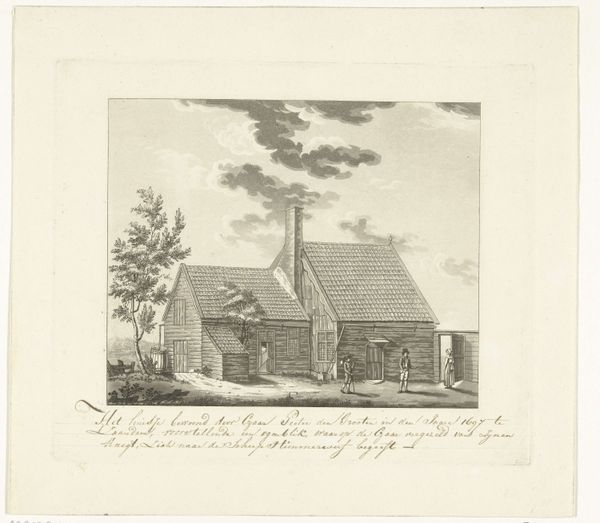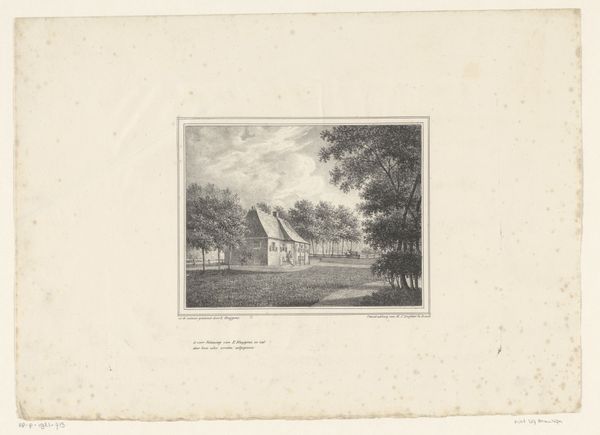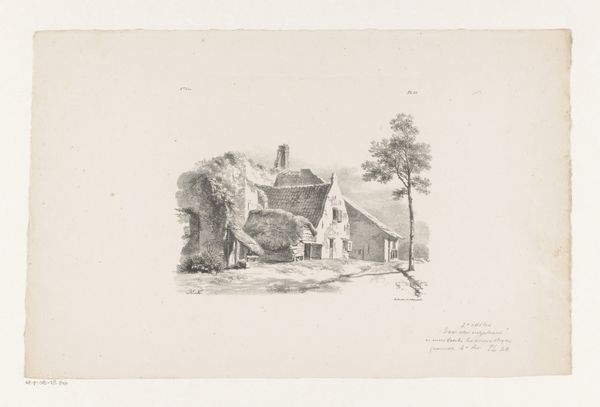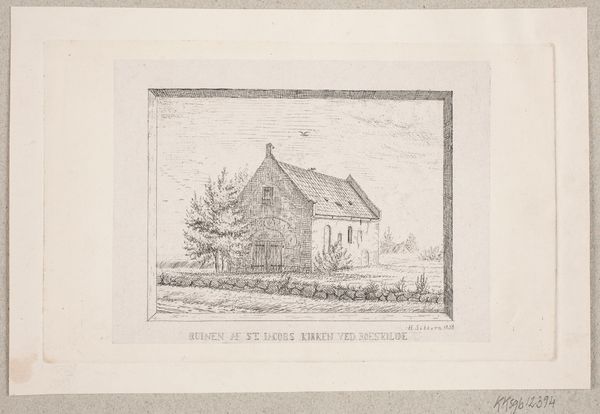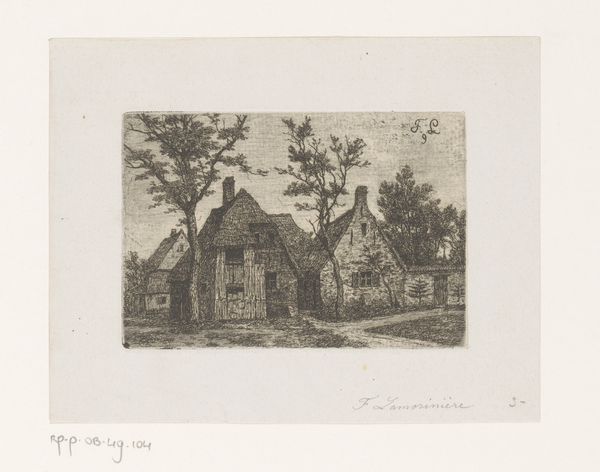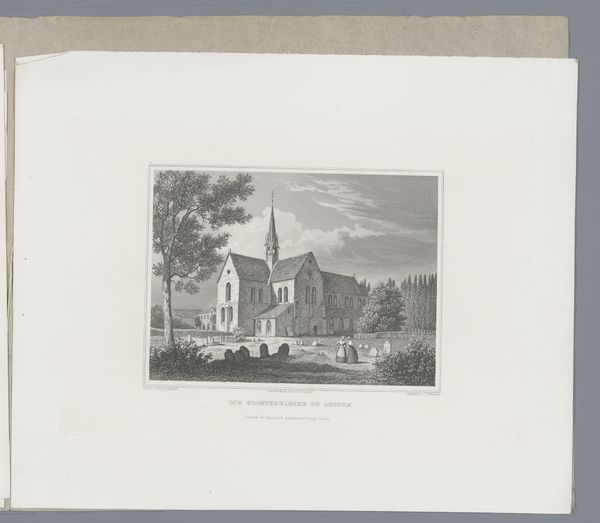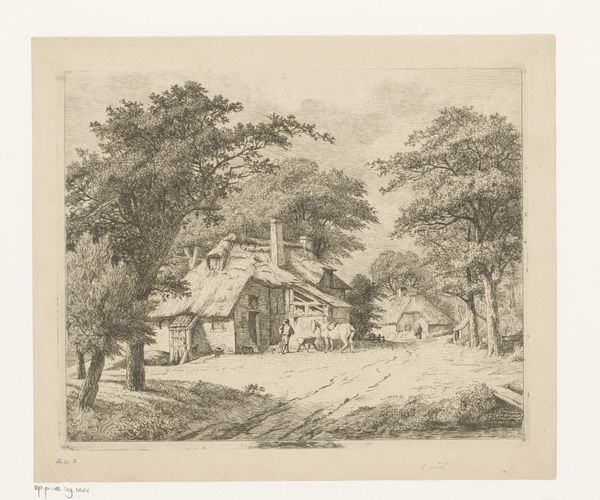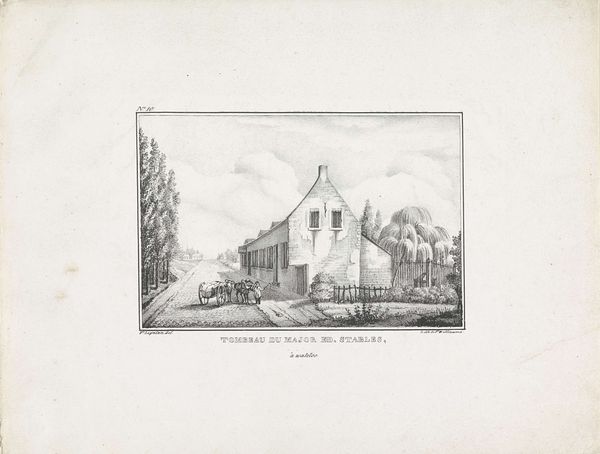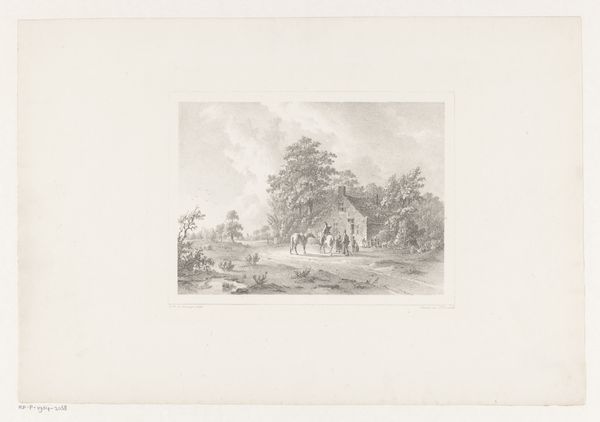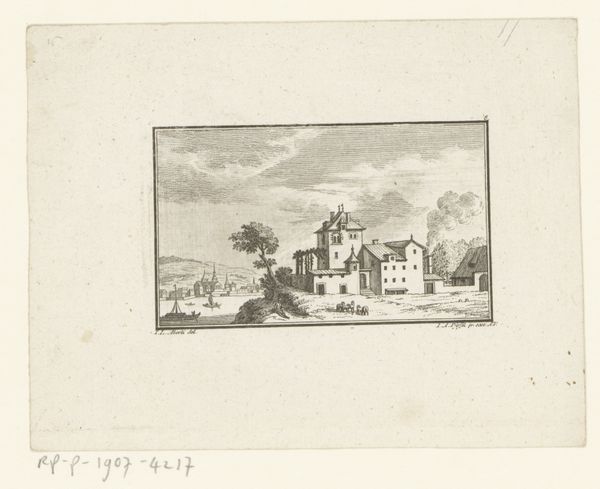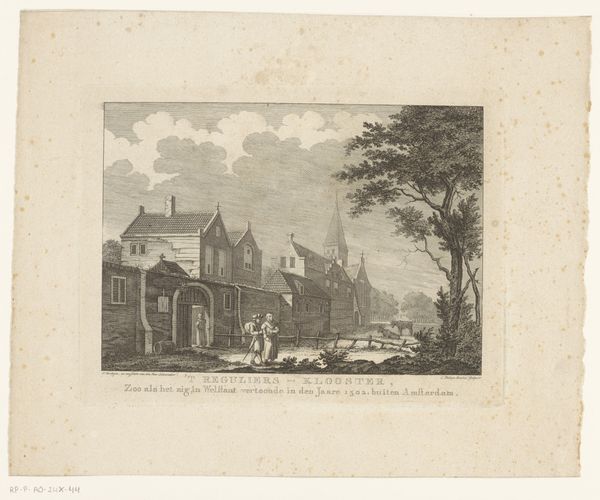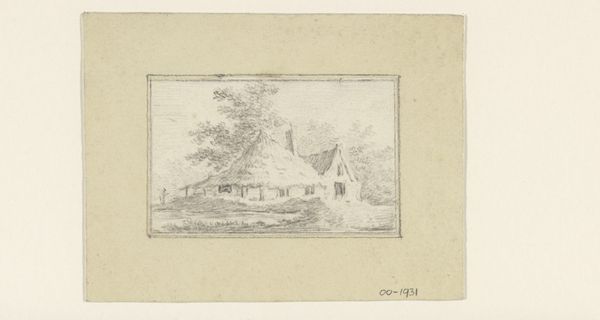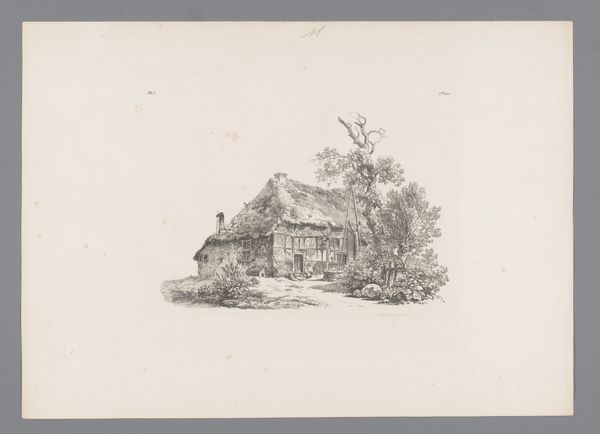
print, etching, intaglio
#
aged paper
#
dutch-golden-age
# print
#
etching
#
intaglio
#
old engraving style
#
landscape
#
realism
Dimensions: height 135 mm, width 228 mm
Copyright: Rijks Museum: Open Domain
Editor: Here we have Jacob Ernst Marcus' etching, "Tsaar Peterhuisje te Zaandam, 1697", created in 1814. The intricate details almost give it the feeling of looking at an architectural blueprint. What draws your eye in this piece? Curator: For me, this work is compelling because it signifies the intertwining of history, power, and the image. The "Tsaar Peterhuisje" itself is a relic, a tangible connection to Peter the Great's time in the Netherlands. Marcus's etching, created over a century later, perpetuates the mythos surrounding Peter's sojourn. It speaks to the power of images to construct and reinforce historical narratives, especially those related to powerful figures. Editor: So, it's more than just a picture of an old house. It is more like a monument in its own right? Curator: Precisely! The Rijksmuseum's decision to house this work within its collection contributes to this memorialization. Museums aren’t neutral spaces, are they? By displaying it, they’re affirming the importance of this historical narrative, even celebrating Peter the Great to some degree. We need to consider how this representation might influence public perception. How do you see that playing out? Editor: That’s a really interesting point. I guess I had initially approached it as simply an historical landscape, but it is really charged. It almost feels like a piece of propaganda, subtly reinforcing power structures from centuries ago. Curator: It's fascinating how a seemingly simple etching can reveal complex socio-political dynamics. I would not go so far as propaganda but how we view images, how we read history can shift according to the framing institutions give it. This piece definitely highlights how artistic representation intersects with cultural memory. Editor: I definitely see this etching differently now, and recognize how crucial it is to analyze how art plays into shaping historical narratives and institutional powers. Thanks for the new point of view!
Comments
No comments
Be the first to comment and join the conversation on the ultimate creative platform.
